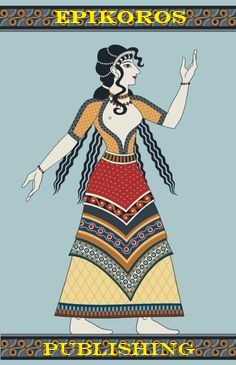From the Afterword of MEDOUSA–
The story of Medousa, from her own point of view, was one I had wanted to write for many years. The first scene I had actually conceived was that of Stheno and Euryale trying to chase down Perseus, in agony over the slaying of their sister. I remember having thought of it while reading one of the last story cycles of Neil Gaiman’s superlative series Sandman, “The Kindly Ones.” There was a scene in which Daniel’s mother, Lyta, was searching for her child, and was wandering around the city, either delusional, or seeing beyond reality to the narrative underpinnings of reality. She ran into two women, who turned out to be Stheno and Euryale; and while they could not help her with her personal quest, they invited her to live with them, and let them look after her. “Would you like to be our sister?” they asked her. “There should be three of us. You could be the mortal one.” They implored her to become their third, and that she should be their sister. It occurred to me then how much Stheno and Euryale loved Medousa.
Later on, maybe fifteen or seventeen years ago, now, I was contemplating the old stories of Medousa. It struck me that most people only remember Ovid’s tale of a vain young woman who was so proud of her beauty, and especially her golden hair, that Athena herself punished her by making her a Gorgon. But in the older stories of Hesiod and Apollodorus, we learn that Medousa, a priestess of Athena, was raped by Poseidon, in Athena’s temple. And it always struck me how unjust it was. Medousa herself, punished for being the victim of a violent crime, because it somehow defiled Athena’s temple? Why didn’t Athena defend her priestess? Why didn’t she bring complaint against Poseidon? Why did Medousa have to be destroyed because of what was done to her? Hadn’t her rape been enough to suffer through, but that she had to be driven from mortal lands, a monster, living in lonely desolation?
But of course, we see that scenario even today. In America, a girl is drugged and raped by a group of young men, and the community protects the males while condemning the woman and any who might help her. In the Middle East, a young woman is raped, and when she sues for justice from the authorities, she herself is condemned for ‘lewd behavior.’ In central and southern Asia, a girl is raped and abused, and when she pleads for justice and redress, her village elders condemn her, and her family is shamed until they ‘cleanse’ their ‘honor,’ often by slaying the girl who was the victim.
And so, I wanted to write Medousa’s story. Of course, we all know how she ended, and I felt that I couldn’t change that ending, as tragic as it was. But I don’t want Medousa to be remembered as a mindless monster, preying on the innocent, as she has often been portrayed in modern popular culture. I cannot think of Medousa as malevolent, or ill-intentioned. She was, rather the victim of a horrible crime, and she suffered for it. To be sure, there were several versions of the Medousa Myth; there are numerous versions of most of the myths we think we know. And the story of Medousa has certain elements that might afford a very different tale indeed–For example, serpents, and mortals being turned into stone, are elements of Athena’s history; I could have as easily written a tale in which Medousa was Athena’s Lady High Executioner and cultic guardian. Perhaps I will write such a story one day. But again, here, my aim is to show that Medousa herself was not a monster, but a tragic heroine. A young woman with her own life, and dreams, and hopes, and loves.
And although I have finished Medousa’s story, in a sense, her story continues: Every time a woman is attacked, and then–if she survives–is herself blamed for it…Every time a devout believer is not only abandoned by, but attacked by, the god, goddess, or gods (or, more accurately, its self-appointed representatives) s/he had been dedicated to… Every time a woman is cast out of her community for being who and what she is, through no fault of her own…With every ‘honor killing…’ With every rape cover-up…With every one–Medousa’s story continues.
And I hope to Gaia and Ouranos, it STOPS.
“Medousa” is full of anachronisms. It is set in a time when reliable historical records were not kept, but oral literature thrived. There is Medousa, herself a mythic figure who would have existed perhaps one or two thousand years BCE, before the rise of Hellenic civilization. There are Aias, the legendary warrior of Salamis, known to us through Homer’s “The Iliad,” along with Helen of Sparta. And there is Cynisca, the first woman in history to have won Olympic gold, who lived during the fourth century BCE. We see Athens and Sparta, at a time before any animosity existed between to two states, and yet, Spartan society, as I describe in the book, post-dates the fall of Troy by five or six centuries. Helots did not even exist until after 1100 BCE with the Dorian conquest of Sparta, and were even then communally held slaves of the State.
Nor do I adhere to an accurate chronology: For example, consider two of the myths regarding the Titan, Atlas: In one story, Perseus uses the head of the Gorgon Medousa to turn Atlas into stone, forming the Atlas Mountain Range. In another story, Heracles, as one of his labors, enlists Atlas’ help in retrieving golden apples that belonged to Zeus, and then Atlas tried to leave Heracles to bear the vault of Heaven in his place. What most forget is that Heracles was the grandson of Perseus. So, how could both these stories be true?
It is only recently in human history that the subject of history became concerned with the accurate recording of ‘exactly what happened,’ in ‘exactly what place,’ at ‘exactly what time,’ and ‘involving which persons.’ Until the late Victorian era, most histories were written in order to illustrate moral lessons, or to indulge in poetry and florid prose, or to attempt to explain why things were so, or to create foundation myths for peoples and tribes. History was treated almost as Midrash–a narrative constructed to convey the lessons of history, as opposed to history itself. My book is written in those terms, rather than as a piece of real historical fiction. It fails as a piece of real historical fiction.
On the other hand, as a piece of Mythical History, I believe it to be perfectly adequate.
Remember; it’s only Myth.
I owe a great debt of gratitude to my dear friend Robert Dorf, who acted as my editor, helping me to construct an emotionally true narrative, and kept me focused on the heart of the story, giving it its soul, and who would not allow me to quit. I owe a great debt to my friend James Fitzpatrick, who also rendered much editorial assistance, bringing to bear his vast scholarship in Classical and Ancient Greece upon my work. His criticisms were much appreciated.
Many thanks also to Joseph and Jeannie Michel, who despite having read many early drafts of this book, insisted that I complete the story and publish it. Thanks also to Amy Myers, who actually prodded me to begin this project in the first place. And thanks, again, to Ross Watson and Jennifer Rehnay, who most generously shared with me their knowledge and experience in preparing a book for publishing. And many thanks to Em Fripp, for her masterful cover art, and illustrations.






